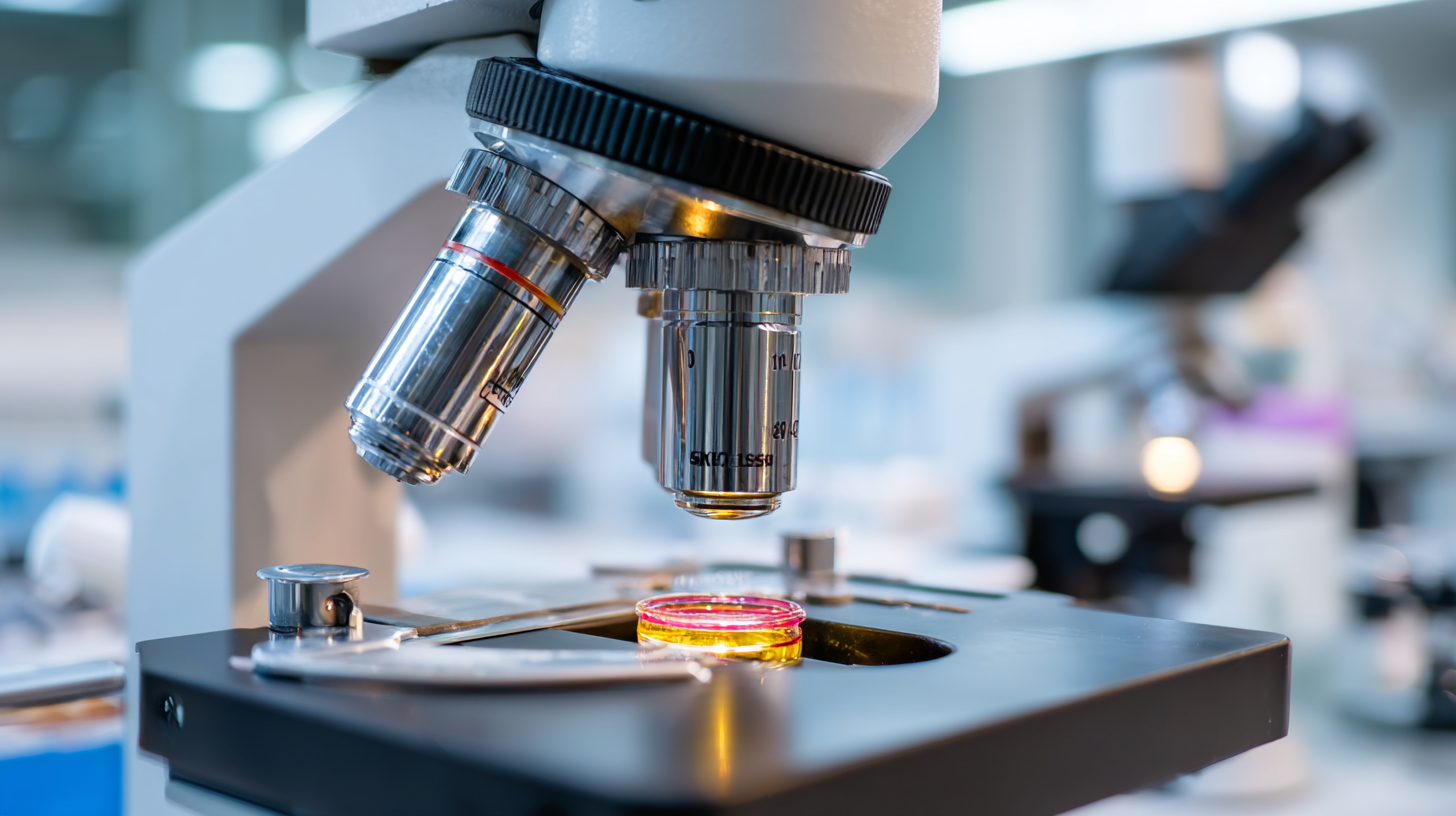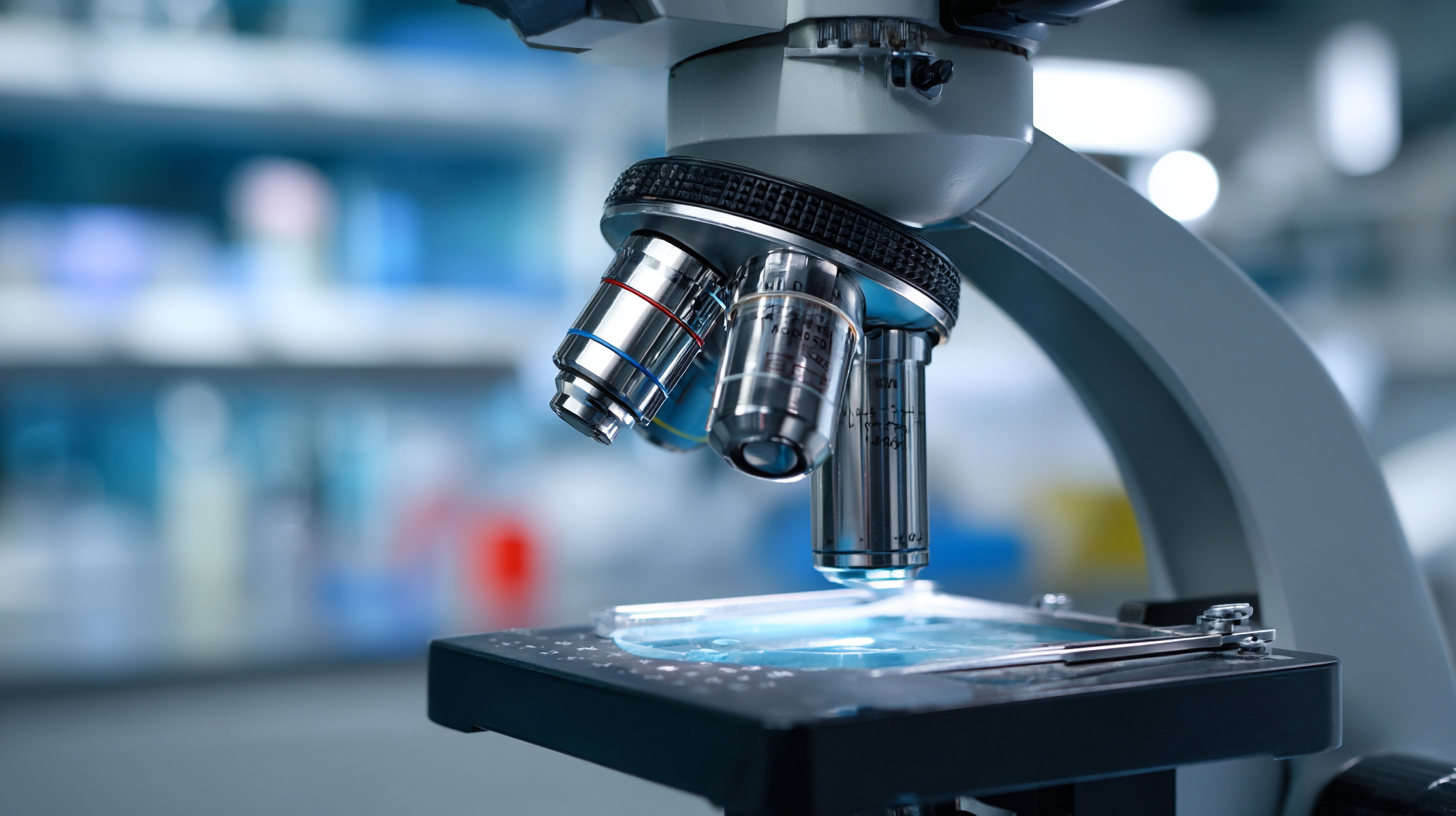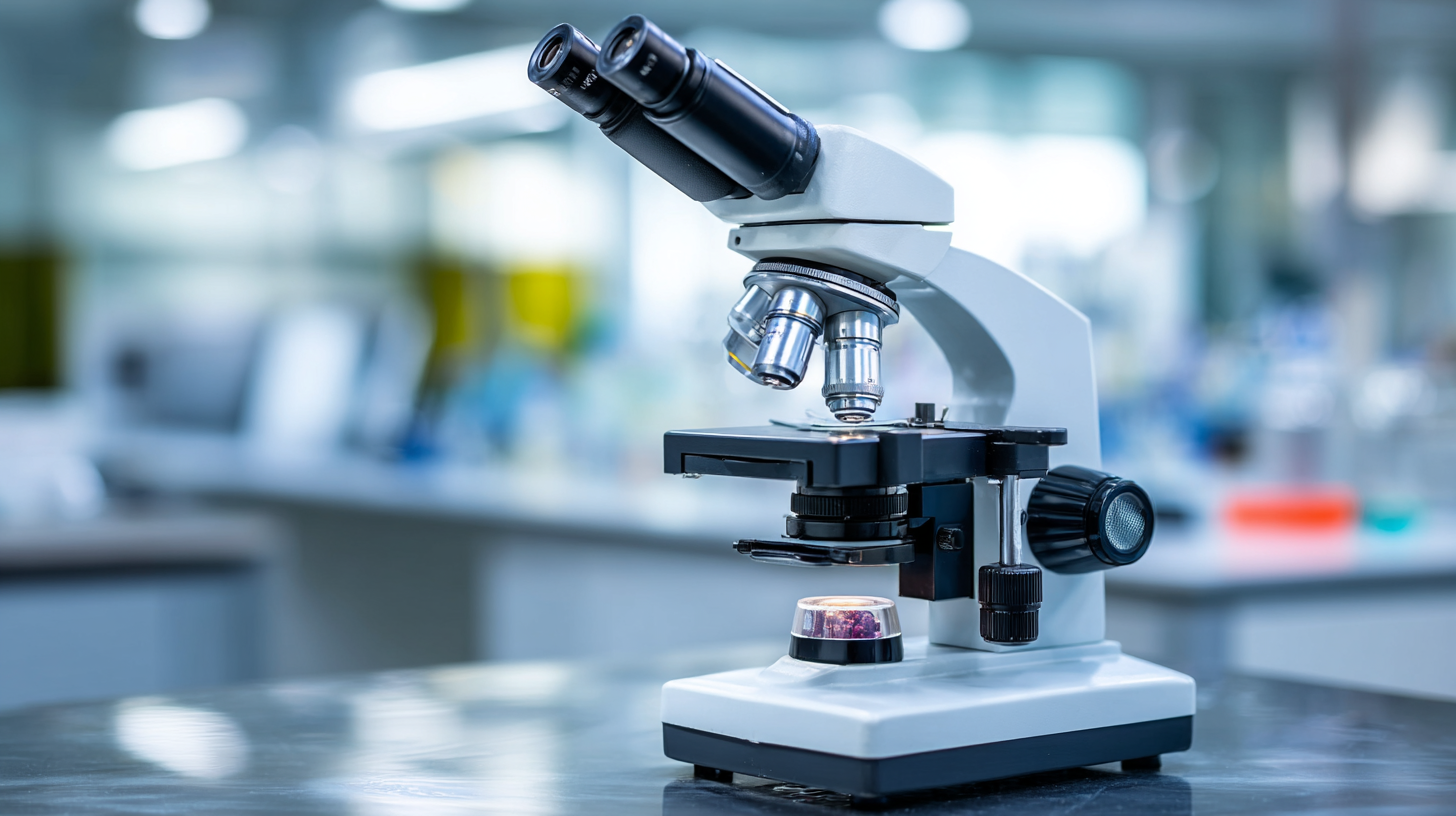- Home Page
- Company Profile
-
Our Products
- Microscope
- CONFOCAL MICROSCOPES
- Trinocular Upright Metallurgical Microscope
- Portable Grooved Metallurgical Microscope
- Cell Culture Imaging System
- Metallurgical Microscope
- Projection Microscope
- Student Stereo Microscope
- BINOCULAR STEREO ZOOM MICROSCOPE
- PCB Inspection Video Stereoscope Microscope
- SPINNERET MICROSCOPE
- Penta Head Microscope/ Multi view Head Microscope
- Research Polarising Microscope
- Senior Dissecting Microscope
- Dissecting Microscope
- Motorized Comparision Microscope
- Sieves Digital Microscopes
- Advance Inverted Tissue Culture Microscope
- Advance Stereo Zoom Microscope
- Student Projection Microscope
- Inverted Metallurgical Microscope
- Measuring Microscope
- Digital Spinneret Inspection Microscope
- Portable Inverted Tissue Culture Microscope
- Binocular Inverted Tissue Culture Microscope
- Student Compound Microscope
- Trinocular Stereozoom Microscope
- Advanced Research Microscope
- Gemological Microscope
- Polarizing Projection Microscope
- Senior Inspection Spinneretscope
- Confocal Microscope
- Senior Projection Microscope
- Toolmaker's Microscope
- Research Microscope
- Stereo Inspection Microscope
- Student Medical Microscope
- Digital Biological Microscope RXLr-4D
- Toolmaker Microscope Large
- Stereo Inspection Scope
- Trinocular Research Microscope
- Portable Metallurgical Microscope
- Binocular Research Microscope
- Student School Microscope
- Inverted Tissue Culture Microscope
- Projection Microscope
- Laboratory Microscope
- Decca Head Microscope
- Advanced Research Material Microscope
- Microtomes
- Semi Automatic Rotary Microtome
- Senior Precision Rotary Microtome
- Rocking Microtome
- Rotary Microtome Erma Type
- Freezing Microtome
- Fully Automatic Rotary Microtome
- Manual Rotary Microtome RMT-25
- Advance Rotary Microtome
- Hand Table Microtome
- Knife Sharpener Microtome
- Sliding Miocrotome
- Slide Staining Machine
- Rotary Microtome
- CRYOSTAT MICROTOME
- Optical Instruments
- Tissue Processor Machine
- Microscope Accessories
- Histopathological Equipment
- Lab Instrument
- Radical Digital Turbidity Meter
- Radical Microprocessor Dissolved Oxygen Meter
- Digital Photo Colorimeter
- Tap Density Tester
- Serological Water Bath
- Magnetic Stirrer
- Dual Channel Flame Photometer
- pH or mv or Conductivity
- Round Centrifuge
- Radical Disintegration Test Apparatus
- Digital Slide Scanner
- Precision Water Bath
- Incubator Shaker Water Bath
- Hemoglobin meter
- Microprocessor Colony Counter
- PASS BOX DYNAMIC
- Radical Microprocessor Colony Counter
- Bulk Density Apparatus
- Laboratory Rectangular Hot Plates
- Tablet Dissolution Test Apparatus
- Hemoglobin Meter (Sahli's)
- Micro Centrifuge 16000 R.P.M.
- Revolutionary General Purpose Digital Centrifuge
- Vortex Shaker
- Rectangular Water Bath
- Heating Mantel
- Digital Spectrophotometer
- Haematocrit Centrifuge
- Water Distillation with Metal Heater
- Hand Specimen Leveler Press
- GROSSING TABLE
- COOLING PLATE
- MICROPROCESSOR PH METER
- DIGITAL FLAME PHOTOMETER
- pH/mV/TEMPERATURE TESTER
- DIGITAL PH, CONDUCTIVITY & TEMPERATURE METER
- Radical Auto Karl Fischer Titrimeter
- Stereo Zoom Microscope
- Jewellery Making Microscope
- Binocular Stereo Microscope
- Advanced Stereo Zoom Microscope
- Articulated Trinocular Stereo Zoom Microscope
- Digital 3D Inspection Microscope
- Binocular Stereo Microscopes
- Motorized Stereo Microscopes
- Trinocular Microscope
- Stereo Inspection Microscope
- Stereo Microscope
- Digital 3D Inspection Microscope RSZ-3D
- Stereo Zoom Microscope RSM-8
- Polarising Microscopes
- Lab Consumables
- Profile Projector
- Optical Profile Projector
- Vertical Profile Projector
- Profile Projector RPP-500
- Profile Projector
- PROFILE PROJECTOR
- Universal Profile Projector
- Bench Type Profile Projector
- Charpy Profile Projector
- High Sharpness Profile Projector
- Profile Projector
- Horizontal Profile Projector
- Digital Profile Projector
- Radical Profile Projector
- Coaxial Profile Projector
- Anotomy Model
- Metallurgical Microscope
- Microscope
- Contact Us

Ultimate Checklist for Choosing the Best Medical Microscope for Your Laboratory Needs
In the ever-evolving landscape of laboratory equipment, selecting the right medical microscope is crucial for achieving accurate results and advancing research. As a vital tool in diagnostics and scientific exploration, the medical microscope not only enhances the capabilities of laboratory professionals but also embodies cutting-edge technology and innovation. With China's commitment to excellence in manufacturing, many high-quality medical microscopes are now designed to meet global standards while proudly showcasing the country’s prowess in this field.

This ultimate checklist aims to guide you through the essential aspects to consider when choosing a medical microscope that best suits your laboratory needs, ensuring you make an informed decision that aligns with industry standards and enhances your research capabilities.
Table of Contents
[Hide]
Key Features to Consider in a Medical Microscope for Your Lab
When selecting a medical microscope for your laboratory, understanding the key features is essential to meet your specific needs. High-quality optics, including objective lenses with magnifications ranging from 4x to 100x, are crucial for achieving clear visualization of specimens. According to a recent report by MarketsandMarkets, the global microscopy market is expected to grow to $12.4 billion by 2025, with advancements in optical technology playing a significant role. Therefore, investing in a microscope with superior optical components will not only enhance imaging quality but also improve diagnostic accuracy.
Another critical feature to consider is illumination. LED lighting systems are becoming increasingly popular due to their longevity and adjustable intensity, making them ideal for various applications. A study in the Journal of Biomedical Optics highlights that appropriate lighting can significantly enhance the visibility of cellular structures, thus facilitating better analysis. When choosing a microscope, ensure it offers adjustable lighting options to cater to different specimen types.
**Tip:** Always assess the ergonomic design of the microscope as well. Look for models with adjustable height and inclined eyepieces to reduce strain during prolonged use. Additionally, consider integrated digital imaging capabilities, which can streamline workflow and improve collaboration within your lab. Prioritizing these features will help you select the best medical microscope tailored to your laboratory's demands.
Medical Microscope Features Comparison
Understanding Different Types of Medical Microscopes and Their Uses
When selecting the ideal medical microscope for your laboratory, understanding the different types and their specific applications is crucial.
Optical microscopes are widely used for basic examinations in labs. They utilize visible light and a series of lenses to magnify specimens, making them suitable for a range of applications, from analyzing tissue samples to conducting routine cell counts. The simplicity and effectiveness of optical microscopes make them an essential tool in most medical settings.
For more advanced applications, consider digital microscopes.
These microscopes integrate imaging technology, allowing for high-resolution images and video capture of specimens. They are particularly beneficial for telemedicine and remote diagnostics, as they enable seamless sharing of images with colleagues for collaborative analysis.
Additionally, fluorescence microscopes use high-intensity light to excite specific markers in specimens, making them invaluable for research in cell biology and pathology.
Understanding these types, their features, and uses will help you make an informed decision tailored to the specific needs of your laboratory.
Essential Accessories to Enhance Your Microscope Experience
When investing in a medical microscope, essential accessories can significantly enhance your laboratory experience. Consider adding a compatible camera attachment to document your findings seamlessly. A camera adapter allows for easy image capture, which can facilitate better collaboration among team members and streamline data collection for reports and presentations.
Another vital accessory is an upgraded stage micrometer. This tool enables precise measurements of microscopic specimens, ensuring accuracy in your research. A micrometer can significantly improve your analysis, as you can easily calibrate and compare measurements with enhanced clarity.
Don’t overlook the importance of quality eyepieces in your setup. Upgrading to high-performance eyepieces can broaden your field of view and enhance the overall image quality. This not only benefits your immediate observations but also contributes to a more enjoyable and productive microscopy experience. When choosing eyepieces, ensure they are compatible with your microscope and suit your specific laboratory needs.

Budgeting Tips for Choosing a Quality Medical Microscope
When it comes to choosing a quality medical microscope, budgeting plays a crucial role. It’s essential to identify not only the initial cost of the microscope but also the long-term expenses associated with its maintenance and operation. Start by evaluating your laboratory's specific needs—considering factors such as the types of specimens you'll be analyzing and the required magnification levels. Once you have a clear understanding, set a realistic budget that provides flexibility to incorporate additional features that may enhance your laboratory's capabilities.
Another crucial budgeting tip is to research the market thoroughly. Prices for medical microscopes can vary widely based on features, brands, and quality. Look for manufacturers that offer warranties and reliable customer support, which can save costs in the long run. Additionally, consider the advantages of investing in higher-quality, durable models that may reduce the frequency of replacements. Remember, a well-planned investment in a microscope can lead to improved results and efficiency in your laboratory, ultimately justifying the upfront cost.
Ultimate Checklist for Choosing the Best Medical Microscope for Your Laboratory Needs - Budgeting Tips for Choosing a Quality Medical Microscope
| Feature | Description | Price Range (USD) |
|---|---|---|
| Optical Quality | Ensure high-resolution optics for clear imaging. | $500 - $2500 |
| Magnification Levels | Multiple levels for varied sample observations. | $300 - $2000 |
| Illumination Type | LED, Halogen, or Fluorescent options. | $200 - $1500 |
| Ease of Use | User-friendly controls for efficient operation. | $100 - $1200 |
| Build Quality | Durable frames and components for longevity. | $400 - $3000 |
| Portability | Lightweight for field use or easy transport. | $250 - $1500 |
| Warranty | Comprehensive coverage for repairs or replacements. | $100 - $500 (as an additional option) |
Maintenance Advice for Prolonging the Life of Your Microscope
When it comes to prolonging the life of your laboratory microscope, maintenance is key. Regular upkeep not only ensures optimal performance but also protects your investment in this crucial equipment. Much like how advancements in nano-preservation technology are enhancing the shelf life of fresh fruits and vegetables, meticulous attention to your microscope can significantly extend its functionality. Maintaining clean optics and regularly calibrating the instrument helps avoid wear and tear, ensuring that it remains reliable for years to come.
Additionally, considering environmental factors is vital. Just as innovative approaches are applied in the field of agriculture to preserve product quality, creating a conducive laboratory environment is paramount. Regulating temperature and humidity while storing your microscope properly can minimize the risks of corrosive damage and mechanical failure. Whether through routine inspections or specialized cleaning techniques, integrating these maintenance strategies can yield remarkable benefits, allowing your microscope to serve its purpose efficiently and effectively in your laboratory.

Contact Us
- 9th Milestome, Ambala-Jagadhri Road, P.O.- Khudda Kalan, NH-444A,Ambala Cantt - 133104, Haryana, India
- Phone : 08045479132
- Mrs POONAM BHANDARI (Incharge - Mktg & Sales )
- Mobile : 08045479132
- Send Inquiry
GST : 06AACCR8985N1ZI
Our Products
RADICAL SCIENTIFIC EQUIPMENTS PVT. LTD.
All Rights Reserved.(Terms of Use)
Developed and Managed by Infocom Network Private Limited.
Developed and Managed by Infocom Network Private Limited.



